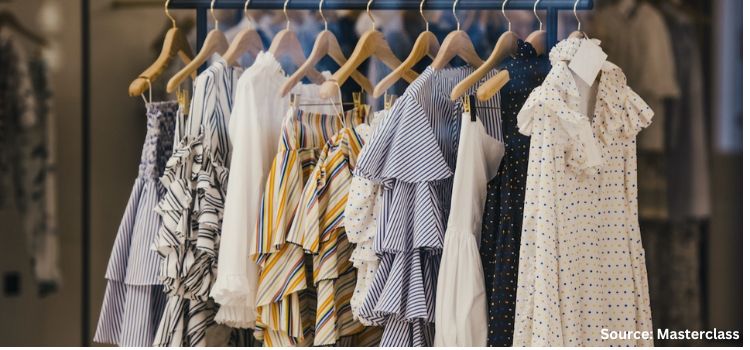Things You Should Know about Fast Fashion
15-Feb-2025

Shopping used to be a once or twice a year event. The last decade or so has transformed this trend and made it into a more regular post-payday event. Numerous stores offer discounts yearlong, enabling people to indulge in fashionable clothes as often as they can. The penetration of the Internet and smartphones and tablets, have catapulted the spending culture to new heights. Apparel companies are offering clothing discounts on their and common shopping apps.
Seasonal sales and end off season sales are encouraging the shopping culture, as they make branded clothes, shoes, and accessories affordable. Quick and overnight delivery services encourage the shopping hobby. This is where fast fashion comes into the picture.
Did You Know
H&M get new and stylish clothes every day, while Topshop launches 400 styles every week on its website?
What is Fast Fashion?
Fast fashion are trendy inexpensive clothes that have been inspired from catwalks and/or celebrity trends and made available at rapid speed to cater to the consumer demands. The key moto of fast fashion is to offer clothing and the whole look to shoppers at the height of the trend’s popularity. These trends often get discontinued, replaced, or upgraded just as easily as them were vogue. This trend often reduces the fashion faux pas of repeating outfits often.
Who are the Big Players in the Fashion Market and Fast Fashion Market?
Companies such as GAP, H&M, Primark, TopShop, UNIQLO, and Zara are the key brands and trend setters in the fashion industry. Less costly alternatives are made by companies such as Missguided, Forever 21, Zaful, Boohoo, and Fashion Nova. Thankfully, there are ethical alternatives worth your support. Most companies and local clothes manufacturing companies that provide less costly fashion apparel replicate fashion week trends and make them into streetwear using less costly materials.
Things You Should Know about Fast Fashion
There’s always so much customers know and don’t know about fashion and the fashion industry. More importantly, they are oblivion the fast fashion market. Following are some points that you should know about fast fashion.
The Price of Fashion
The fashion industry generated 92 million tons of waste in 2015 alone Fast fashion comes with a price, which is not just financial but also social and environmental. The fashion industry is the second most pollution causing industry after the oil industry. The former is responsible for generating not only air pollution but also water and environment pollution. It causes a lot of waste and wastewater, which lands up in landfills or rivers and ultimately the oceans. . Nearly 11 million tons of clothes find their way in landfills in the US alone. More than 80% of the old and discarded clothes end up in landfills.
Plastic Pollution
Over 60% of clothes are manufactured using petrochemicals. These fabrics are not biodegradable in nature. More than half of the clothes are made from synthetic materials. These fibers cause a lot of ecological problems while producing the fabric and after disposal. Pieces of this fabric are swallowed by aquatic creatures and birds or get entangled, thus killing numerous animals and birds, endangering species.
Misconceptions about Recycling
About 1% of textile waste is recycled. The use of current technology is likely to require 12 years to recycle the clothes that the fast fashion industry manufactures in 48 hours. Various companies have started recycling initiatives such as discounts for the replacement of old clothes, which have done a better job at greenwashing and increasing shopping at the stores, than actually solving the pollution issues.
Recycling of textiles means the breaking down of each garment into base fibers. This fiber is used to make new clothes and products. Conversely, garments made form blended fibers makes recycling difficult. Recycling fabrics is not as easy as it sounds. Natural fibers such as cotton and wool cannot be effective recycled, as the process weakens individual fibers, making the fabric weak.
Human Rights Violations
Companies operating in the fast fashion industry produce their products in countries such as Bangladesh, China, and India. The products are often produced in sweat shops, where employees are forced to work for extended periods of time in unsafe and unhygienic working conditions. The cheap labor in these countries are often exploited and abused physically, mentally, and sexually, as worker rights are non-existent. These sweat houses often hire children, thus promoting child labor. These workers are not provided the basic necessities.
The production of garments entails thousands of dyes, chemicals, finishing and softening agents, which are harmful to the environment and the humans. Inhalation of these products can cause respiratory and skin problems. Some chemicals are carcinogenic, thus increasing susceptibility to contracting cancer. Lack of ventilation and extensive use of volatile and flammable chemical cause fires, causing mass deaths of the workers.
Low Quality
As mentioned above, these products are made in developing countries, where regulatory bodies are nonexistent to monitor the quality of the products and raw materials used. This reduces the life span of the products. Defective and poor quality products often wear and tear early, thus ending up in landfills.
Emergence of Slow Fashion
Rising awareness regarding the ill effects of fast fashion is giving rise to the new trend of slow fashion, a new movement which emphasizes on the use of natural materials, fair labor, eco-friendly manufacturing and the production of long-lasting garments. Slow fashion include brands that are conscious about the community, environment, and individuals. Buying garments such brand ensures not only ensure a chique style but also quality products.
Exponential Growth of the Fast Fashion Industry
According to the representatives from the Copenhagen Fashion Summit, the fast fashion industry is anticipated to grow by 60% by 2030. This can cause irreversible damage to the environment.
Conclusion
Buying apparel from responsible brands ensure that the buyers get fashionable, sustainable, and good quality clothes, that do not harm the environment and hopefully reduce the company’s and the buyer’s carbon footprint and do not contributed to the pollution.
Add Comment
Related Blogs
Apple and Samsung Claims 25% of Mobile Accessories Market with High-Quality Offerings
The NMSC analysis shows that the mobile phone accessories ma...
The Future of Eyewear: Trends and Innovations to look out for
Introduction As new technologies emerge and evolve, the eyewear industry cont...
5 Tips For Growing Your Online Fashion Brand in India
India's online ecommerce market is booming everyday, and by 2030, it is pred...











